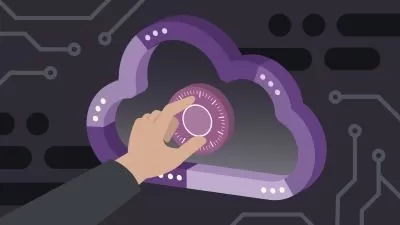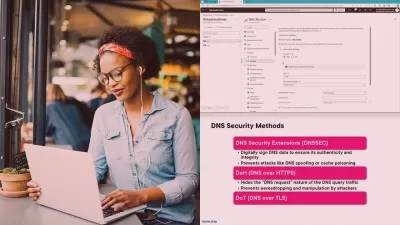CompTIA Network+ (N10-009)
Stone River eLearning
33:54:18
Description
Certificate Exam Preparatory Course
What You'll Learn?
- Gain a solid understanding of fundamental networking concepts and principles.
- Acquire practical skills in configuring and troubleshooting networks.
- Develop proficiency in implementing network security measures to protect against threats.
- Prepare for industry certifications related to networking and network security.
Who is this for?
What You Need to Know?
More details
DescriptionExplore the essential concepts of networking in this comprehensive course. Gain a deep understanding of networking protocols, architectures, and topologies, including the OSI model and TCP/IP stack. Learn practical skills to implement and troubleshoot networks effectively, covering LANs, WANs, DHCP, and DNS configurations.
The course emphasizes operational strategies for maintaining robust network performance and reliability. You'll develop proficiency in diagnosing and resolving common network issues using industry-standard troubleshooting techniques and tools.
In addition to networking fundamentals, the course delves into critical aspects of network security. Understand the importance of securing network infrastructure against threats such as malware, phishing, and unauthorized access. Learn to implement security measures like firewalls, VPNs, and intrusion detection systems to safeguard data and resources.
Ideal for IT professionals, network administrators, and aspiring cybersecurity specialists, this course equips you with practical skills and knowledge essential for managing and securing modern networks. Prepare to excel in your career and enhance your understanding of network operations and security best practices.
To gain a solid understanding of fundamental networking concepts and principles. Acquire practical skills in configuring and troubleshooting networks.
Basic familiarity with computers and operating systems is recommended. No prior networking experience is required, but a willingness to learn and engage with technical concepts is essential.
Who this course is for:
- This course is ideal for IT professionals, network administrators, system engineers, and anyone interested in expanding their knowledge of networking and network security. It is suitable for beginners looking to establish a strong foundation in networking as well as experienced professionals aiming to enhance their skills and prepare for advanced certifications.
Explore the essential concepts of networking in this comprehensive course. Gain a deep understanding of networking protocols, architectures, and topologies, including the OSI model and TCP/IP stack. Learn practical skills to implement and troubleshoot networks effectively, covering LANs, WANs, DHCP, and DNS configurations.
The course emphasizes operational strategies for maintaining robust network performance and reliability. You'll develop proficiency in diagnosing and resolving common network issues using industry-standard troubleshooting techniques and tools.
In addition to networking fundamentals, the course delves into critical aspects of network security. Understand the importance of securing network infrastructure against threats such as malware, phishing, and unauthorized access. Learn to implement security measures like firewalls, VPNs, and intrusion detection systems to safeguard data and resources.
Ideal for IT professionals, network administrators, and aspiring cybersecurity specialists, this course equips you with practical skills and knowledge essential for managing and securing modern networks. Prepare to excel in your career and enhance your understanding of network operations and security best practices.
To gain a solid understanding of fundamental networking concepts and principles. Acquire practical skills in configuring and troubleshooting networks.
Basic familiarity with computers and operating systems is recommended. No prior networking experience is required, but a willingness to learn and engage with technical concepts is essential.
Who this course is for:
- This course is ideal for IT professionals, network administrators, system engineers, and anyone interested in expanding their knowledge of networking and network security. It is suitable for beginners looking to establish a strong foundation in networking as well as experienced professionals aiming to enhance their skills and prepare for advanced certifications.
User Reviews
Rating
Stone River eLearning
Instructor's Courses
Udemy
View courses Udemy- language english
- Training sessions 117
- duration 33:54:18
- Release Date 2024/07/25











